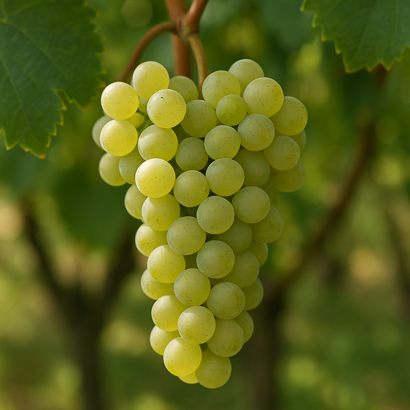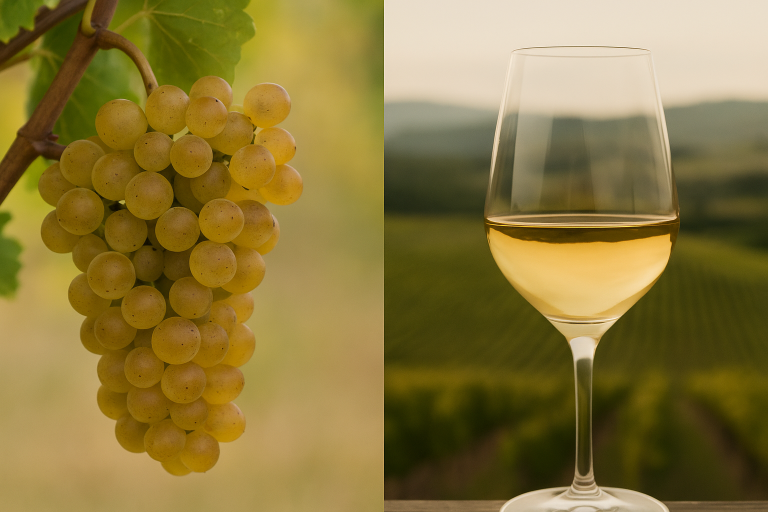Crisp, refreshing, and endlessly adaptable, Pinot Grigio — known as Pinot Gris in France — is one of the most popular white wines in the world. Beloved for its light, clean flavors and easy drinkability, it’s the go-to choice for casual sipping and fine dining alike. Yet behind its simplicity lies surprising depth: depending on where it’s grown and how it’s made, Pinot Grigio can range from delicate and citrusy to rich and textured.
A Brief History
Pinot Grigio and Pinot Gris are, in fact, the same grape — a mutation of Pinot Noir that developed grayish-pink skins (hence gris, French for “gray”). The grape’s origins trace back to Burgundy, France, where it was first documented in the 14th century. Over time, it spread east to Alsace and Switzerland, and south into northern Italy, where it truly found fame.
In France, winemakers treated Pinot Gris seriously, crafting rich, aromatic wines in Alsace that could age gracefully. Meanwhile, Italian producers in regions like Veneto and Friuli-Venezia Giulia embraced a lighter, more refreshing style — one that captured the spirit of casual Mediterranean dining.
By the late 20th century, Italian Pinot Grigio had become a global sensation. Its crisp, clean style and affordable price made it the ultimate “gateway white,” introducing millions to the pleasures of wine. Today, both expressions coexist — the vibrant Italian Grigio and the fuller-bodied French Gris — offering drinkers two distinct takes on the same versatile grape.
Where It’s Grown
Pinot Grigio / Gris thrives in cool to moderate climates across the globe:
- Italy: Especially in Veneto, Alto Adige, and Friuli-Venezia Giulia, producing dry, crisp wines with apple, pear, and citrus notes.
- France (Alsace): Fuller-bodied Pinot Gris with honey, spice, and smoky undertones, often richer and off-dry.
- Germany (Grauburgunder): Balanced styles ranging from dry to medium-sweet, with lively acidity.
- United States: California and Oregon produce fruit-forward versions; Oregon’s Willamette Valley leans toward Alsace-style richness.
- New Zealand & Australia: Bright, aromatic examples with tropical fruit and vibrant acidity.
Each region reveals a different personality — proof of the grape’s chameleon-like adaptability.
Tasting Notes
Pinot Grigio is typically light-bodied, with crisp acidity and delicate fruit flavors of lemon, green apple, pear, and white peach. It’s known for its refreshing simplicity and clean finish.
Pinot Gris, on the other hand, tends to be richer and fuller-bodied, offering honeyed tones, ripe pear, melon, and spice, with a silky texture and a hint of sweetness.
Both styles share a vibrant freshness, but their moods differ: Grigio is bright and breezy — perfect for warm days — while Gris is lush and contemplative, ideal for pairing with flavorful dishes.
Serve chilled (around 48–52°F) to enhance its freshness. Pair with seafood, salads, pasta with cream sauce, roast chicken, or mild cheeses. Its versatility makes it a natural companion for both light and hearty fare.
The Essence of Pinot Grigio / Pinot Gris
Pinot Grigio and Pinot Gris may share DNA, but they express two sides of the same story: one defined by purity and refreshment, the other by depth and texture. Together, they showcase the beauty of diversity within a single grape.
Whether you prefer the crisp mountain freshness of Italian Pinot Grigio or the golden richness of Alsatian Pinot Gris, each sip offers a reflection of its home — and a reminder that wine, like people, can be both familiar and full of surprises.







